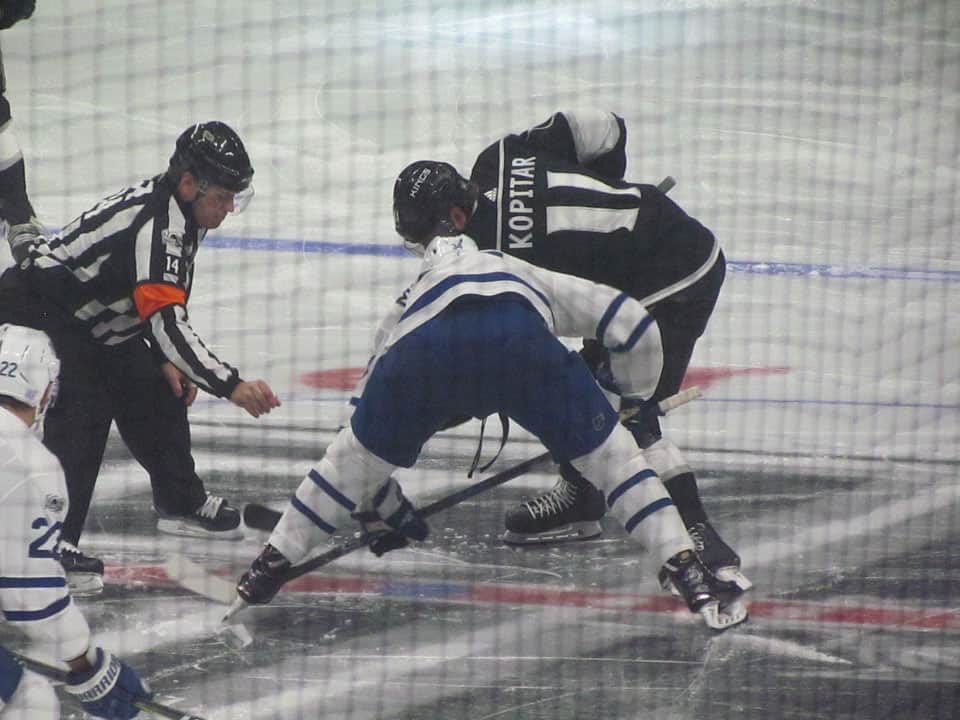“At what point do [the] Toronto Maple Leafs have to start playing Matthews one versus five to make it fair for other teams?” asked Brad Marchand, after Auston Matthews, the Leafs’ centre-man and the NHL’s 2016 first-round draft pick, finished on an incredible end-to-end effort against the Montreal Canadiens.
This question is warranted. Matthews has been off to a rapid start this season, netting 12 goals and 21 points in 19 games while leading the Leafs to second place in the Atlantic Division.
If you aren’t already a member of the Matthews fandom, I suggest you join now.
Following his 40-goal rookie season, Matthews has quickly proven himself as a prolific, exciting, and timely goal scorer. That lofty total was enough to tie him for second in the league, a feat comparable only to that of Alex Ovechkin in his rookie season, arguably the greatest pure goal scorer in the league, with 52.
Yet the NHL has taken a dramatic shift since then, with scoring generally on the decline. To put things into perspective, 11 players in Ovechkin’s rookie year had 40 or more goals, while that number drops to just three in Matthews’ year.
In addition, this admirable output is produced in less than ideal circumstances.
Matthews does not skate on the first power play unit, which can often be a dramatic goal boost for many players. Instead, he led the league last year with 32 even-strength goals, which is not only incredibly difficult, but valuable in the playoffs where less power plays take place.
Further, one player alone cannot win a game, despite what Brad Marchand suggests. In the case of Matthews, he plays a majority of his shifts with two very talented and hardworking players, William Nylander and Zach Hyman.
Despite their success, these players are still learning and developing their game, finding their place in a relentless league. In comparison, other leading centers such as Steven Stamkos have the privilege of centering a line with Nikita Kucherov, who has been utterly unstoppable this season. Similarly in Edmonton, Connor McDavid and Leon Draisaitl are proving to be a perfect pair.
Respectfully, Matthews plays with very capable players, but they unfortunately aren’t comparable to Draisaitl or Kucherov. Yet this does not stop him from producing goals like he plays with those stars. One can only imagine what his assist total would be if he were passing to players who converted like those two.
Understandably, there are always cases against star players — seeing as they garner so much attention, their inconsistencies are highlighted just as much as their accomplishments. A case can be made that Matthews fails to provide the same opportunities for his teammates as he does for himself, leaving a sub-par assist total and players working for him rather than with him.
Yet, as per Sportsnet, the Leafs’ top line is among the best in the NHL in high danger chances, scoring chances on net, and passes to the slot. Essentially, the chances are there, and they aren’t all for Matthews.
Regardless, it seems that a respective shooting percentage thus far of 10.9 per cent and 6.2 per cent for Hyman and Nylander are not up to par. In comparison to Matthews’ 16.7 per cent chance shooting, he seems to be able to convert on his chances. Still, there is little concern that these players won’t begin converting soon, as their play advances.
Granted, his output is impressive, but there’s another side to the ice, and the defensive play will frequently distinguish the elite from the complete. As for Matthews, he has been superb in the defensive end as Chris Johnston from Sportsnet notes, “Matthews has only been on the ice for one goal against in 128 minutes at 5-on-5 this season”.
That is wildly impressive considering Leafs head coach Mike Babcock refuses to coddle his young superstar, putting him on for defensive zone face-offs more than half the time, where they must battle to shift the direction of play.
The added level of difficulty is not showing, as Matthews currently has the fifth highest plus/minus in the league (+14), and again as Sportsnet notes, “He has been stripping opponents of the puck at the same rate as Patrice Bergeron.” To say he routinely makes defensive plays comparable to former Selke Trophy winners is impressive at the least.
It’s easy to see how Matthews can be ranked among the best two-way forwards in the league and it’s also intangible which can solidify him among the ranks of the best. McDavid and Stamkos may very likely finish the season with more points and gather a surreal amount of attention. However, Babcock refuses to let his star players run amok and rely solely on talent.
He wants a balanced style of play and is molding Matthews in this image of balance. This image is one of consistency, hustle, and intelligent hockey that few will find anywhere else.
In other words, Matthews is elite and on his way to being complete.


